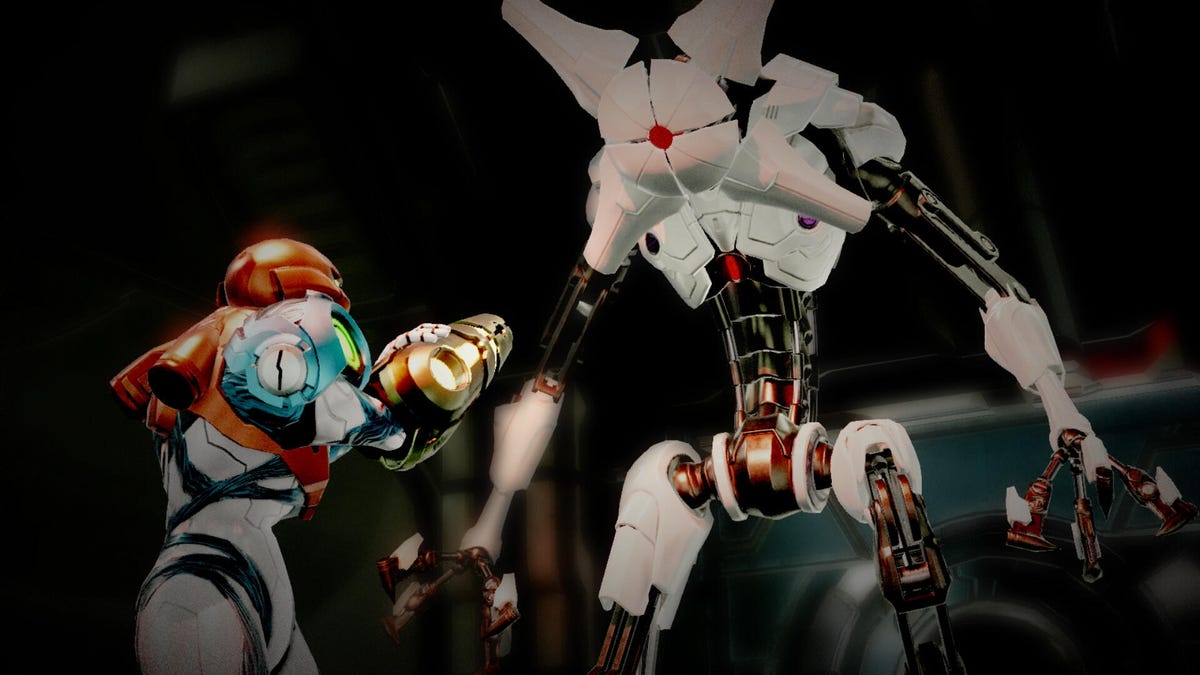Metroid Dread creator Yoshio Sakamoto tells us what to expect from Nintendo's biggest fall game
The mind behind the original Metroid discusses what's new and what inspired Dread's return to the Switch this fall.

Metroid Dread is Nintendo's first truly new 2D Metroid since 2002.
There's something chasing Samus down tunnels and it seems smart. And relentless. The robot, called EMMI, is particularly unsettling because it reminds me of one of those Boston Dynamics robot dogs... but more limber. It keeps scuttling and chasing and it won't go away. It keeps coming back.
Metroid Dread is a new 2D entry in the long-running Metroid series and Nintendo's first legitimately new canon 2D Metroid since 2002's Metroid Fusion on the Game Boy Advance. Announced at Nintendo's E3 Direct by surprise, it's arriving this October. While everyone has also been expecting the first-person Metroid Prime 4, a sequel to the GameCube/Wii game, Metroid Dread's been in the works for much longer. It's technically "Metroid 5" and could even wrap up some of the long-term storylines in Metroid.
But why Dread? What does that mean? Series creator Yoshio Sakamoto discussed some of the inspirations and why the game has taken so long, in a Q&A during this year's virtual E3. We also got to see a bit more of the game in action, too.
"At the time that we came up with the idea [15 years ago], the hardware wasn't there, the technological concepts weren't working within our vision, so we had to put it on hold," Sakamoto says of Metroid Dread. The idea couldn't be realized on the Nintendo DS then, but he sees the Switch as the perfect place for the game.
Metroid Dread's gameplay reminds me of 2017's Metroid: Samus Returns (it's developed by the same team).
Metroid Dread has the most in common with the Game Boy Advance game and immediate storyline predecessor Metroid Fusion, according to Sakamoto. To me it feels like a companion game to Metroid: Samus Returns on the 3DS. That 2017 game was a remake of the Game Boy game Metroid II: The Return of Samus, which I never played. And that game's 2D platform design with 3D graphics is exactly what Metroid Dread is, too. Even the shooting and gameplay mechanics seem similar: there's a blocking defense that can defeat enemies and a free-aiming control that allows more specifically-angled shots.
Sakamoto says that Samus Returns, developed by the same team working on Metroid Dread, was basically a test run for working out if Dread could be made. "With Samus Returns, we met with Mercury Steam Entertainment to make that game. And the reason I met with them was in the hopes that they'd be able to realize the concepts I had for Metroid Dread."
Dread doesn't exactly mean horror
Sakamoto, when asked about the meaning of Dread as the game's name, suggested the game's focus is on a more relentless style of play, one that could border on horror. But I think "horror" isn't the right word: panic, maybe. "From our perspective, this isn't a game that's part of the horror genre," Sakamoto says. "It's really about Samus encountering fear, but she actually stands against that fear and fights it and beats it. And that part of it is important."
The gameplay I saw looks fun and moody/atmospheric, but not scary. The endless EMMI robot pursuits gave me that stressed-out feel that I got in Mario games when Shadow Mario chased me.
Ominous boss.
Sakamoto says a lot of Dread was inspired by the SA-X gameplay in Metroid Fusion, which involves a parasite that mimics the character Samus. "We wanted to take that style of gameplay and put it into what is considered to be the normal Metroid gameplay to make for an exciting experience."
Of the robotic Samus-hunting entity in Dread, Sakamoto says, "I wanted to create something that was unsettling for players and also would communicate this kind of 'unfeelingness' that is inherent in something that's robotic. And also, the fact that its existence is purely just to chase after catch Samus."
The level Nintendo showed off, a lava and machinery-filled location called Cataris, made me think of Samus Returns, but done in a larger and richer scale. It was all extremely retro and also new, like many games now: Shadow Complex, or New Super Mario Bros.
It also made me wonder how Metroid Dread will help set the stage, maybe, for Metroid Prime 4, which is still expected at some point. Will Dread lay down new groundwork? Or will this be the last Metroid for a while?
A moment from the game's prologue.
There will be more Metroid
When asked if Metroid Dread was the end of a story series, Sakamoto instead pointed to more Metroid to come. "The Metroid story until this point has dealt with Samus' strange fate that's been intertwined around this being called the Metroid. And until now that's been the focus of the series. But what this game represents is a bit of a pause, or kind of a new start to something else. Nobody wants the Metroid series to end, and we know that. We ourselves don't want that either: we want people to know that there is some kind of new episode that is waiting in the works. And we want you to look forward with what we do with that next, but there are no specifics now."

